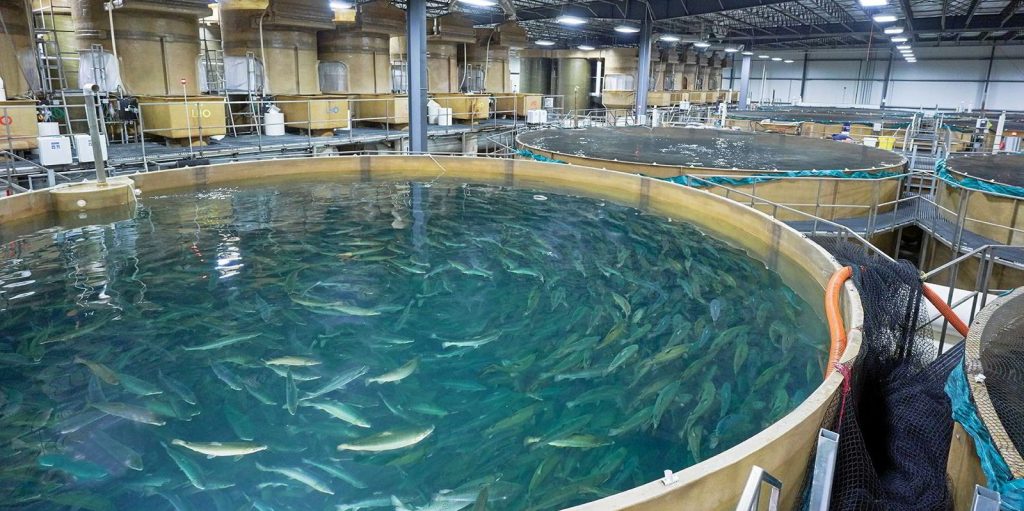The United Arab Emirates (UAE), predominantly known for its expansive deserts, has strategically transformed its landscape to become a leader in sustainable fish farming. This initiative not only bolsters food security but also positions the UAE as a pioneer in aquaculture within arid regions.
Historical Context and Development
The UAE’s commitment to aquaculture dates back to 1984 with the establishment of the Marine Biology Research Centre. This center laid the foundation for breeding local fish species, aiming to enhance marine biodiversity and food resources. In 2014, the Sheikh Khalifa Marine Research Centre was inaugurated, featuring state-of-the-art hatcheries capable of producing up to 30 million fish fingerlings annually. These facilities supply aquaculture farms across the nation, ensuring a steady and sustainable seafood supply.
Key Aquaculture Facilities and Initiatives
- Fish Farm LLC: Operating facilities in Jebel Ali, Dibba, and Umm Al Quwain, Fish Farm LLC utilizes Recirculating Aquaculture Systems (RAS) to cultivate species such as Atlantic salmon, sea bass, sea bream, and hammour. The Jebel Ali facility alone produces approximately 3,000 metric tons of organic fish annually, aiming to meet the UAE’s entire demand for Atlantic salmon.
- Sheikh Khalifa Marine Research Centre: After comprehensive renovations, this center delivered 600,000 European seabream fingerlings to various aquaculture companies, including the Emirates National Fish Farming Company. The center plans to produce over 7 million fingerlings annually, supporting the nation’s food security objectives.
- Abu Dhabi’s Floating Sea Cages: To further enhance food security, Abu Dhabi has initiated a project comprising six floating sea cages off Delma Island, aiming to cultivate 100 metric tons of fish annually. This project focuses on local species like gabit, safi, hamour, and sheri, promoting sustainable aquaculture practices.
Technological Innovations and Sustainability
The UAE’s aquaculture sector emphasizes technological advancements to ensure sustainability:
- Recirculating Aquaculture Systems (RAS): These systems recycle water, minimizing consumption and environmental impact. They create optimal conditions for fish cultivation, even in the UAE’s harsh desert climate.
- Environmental Monitoring: Advanced technologies monitor water quality parameters such as temperature, oxygen levels, and pH, ensuring the health and growth of aquatic species.
Economic and Social Impact
Aquaculture significantly contributes to the UAE’s economy by creating employment opportunities, reducing seafood import costs, and promoting technological innovation. It also plays a crucial role in food security, providing a consistent and fresh seafood supply to meet the demands of a growing population.
Future Outlook
The UAE government continues to invest in aquaculture, aiming to diversify food sources and achieve self-sufficiency. Plans include expanding production capacities, introducing new fish species, and integrating renewable energy sources into aquaculture operations. These efforts position the UAE as a global hub for sustainable aquaculture, sharing knowledge and expertise with other nations.
FAQs
- What species are primarily farmed in the UAE’s aquaculture industry?
- The UAE focuses on farming Atlantic salmon, European seabream, hammour, sea bass, and cobia, among others.
- The UAE focuses on farming Atlantic salmon, European seabream, hammour, sea bass, and cobia, among others.
- How does RAS technology benefit fish farming in the UAE?
- RAS technology recycles water, reducing consumption and mitigating environmental impact, which is crucial in the UAE’s arid climate.
- RAS technology recycles water, reducing consumption and mitigating environmental impact, which is crucial in the UAE’s arid climate.
- What role does the Sheikh Khalifa Marine Research Centre play in aquaculture?
- The center supplies high-quality fish fingerlings to farms nationwide, supporting sustainable aquaculture and food security.
- The center supplies high-quality fish fingerlings to farms nationwide, supporting sustainable aquaculture and food security.
- How does fish farming contribute to the UAE’s economy?
- It creates jobs, reduces seafood import costs, and fosters technological innovation, enhancing economic growth.
- It creates jobs, reduces seafood import costs, and fosters technological innovation, enhancing economic growth.
- What are the plans for aquaculture in the UAE?
- Plans include expanding production, introducing new species, and integrating renewable energy to position the UAE as a leader in sustainable aquaculture.


